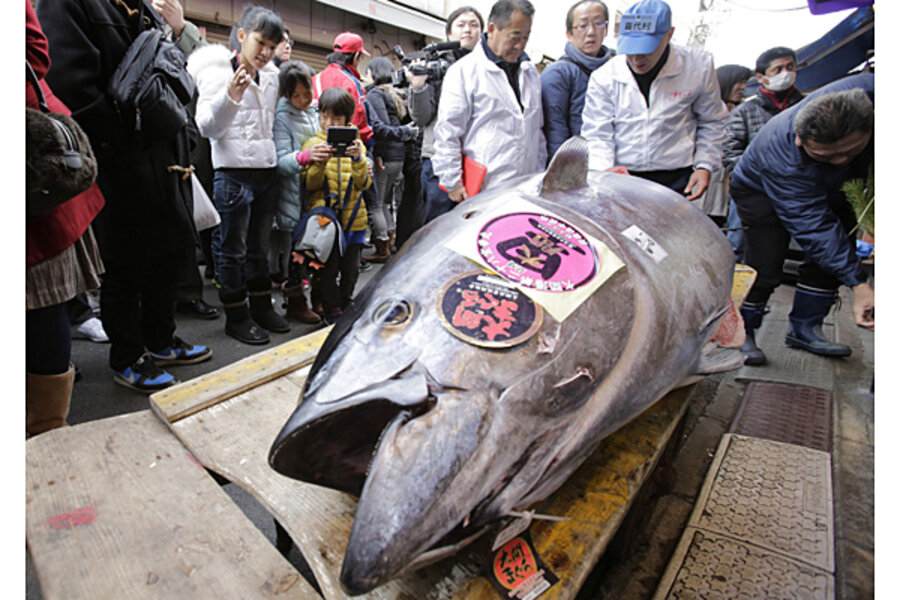Bluefin tuna prices plunge, despite shortage
Loading...
| Tokyo
Sushi restaurateur Kiyoshi Kimura paid 7.36 million yen (about $70,000) for a 507-pound (230-kilogram) bluefin tuna in the year's celebratory first auction at Tokyo's Tsukiji market on Sunday, just 5 percent of what he paid a year earlier despite signs that the species is in serious decline.
Kimura's record winning bid last year of 154.4 million yen for a 222-kilogram (489-pound) fish drew complaints that prices had soared way out of line, even for an auction that has always drawn high bids. Kimura also set the previous record of 56.4 million yen at the 2012 auction.
The high prices don't necessarily reflect exceptionally high fish quality.
"I'm glad that the congratulatory price for this year's bid went back to being reasonable," said Kimura, whose Kiyomura Co. operates the popular Sushi-Zanmai restaurant chain.
Environmentalists say growing worldwide consumption of bluefin tuna is leading to its depletion, and that those in charge of managing fisheries for the species are failing to take responsible action to protect it.
Japanese eat about 80 percent of all bluefin tuna caught worldwide, though demand is growing as others acquire a taste for the tender, pink and red flesh of the torpedo-shaped speedsters of the sea.
Stocks of all three bluefin species — the Pacific, Southern and Atlantic — have fallen over the past 15 years amid overfishing. Stocks ofbluefin caught in the Atlantic and Mediterranean plunged by 60 percent between 1997 and 2007 due to rampant, often illegal, overfishing and lax quotas. Although there has been some improvement in recent years, experts say the outlook for the species is still fragile.
According to a stock assessment released last year by the International Scientific Committee for Tuna and Tuna-like Species in the North Pacific Ocean, the bluefin tuna population is at less than 4 percent of its unfished size.
"The population has effectively been decimated," said Amanda Nickson, director for global tuna conservation for The Pew Environment Group. "Over 90 percent of bluefin tuna are caught before they reach reproductive age. You have to wonder if this remotely sustainable."
So far, governments and management bodies have failed to take measures to protect the species that reflect the seriousness of its decline, she said.
There were 1,729 tuna sold in Sunday's first auction for 2014, according to data from the city government, down from 2,419 last year. The 32,000 yen ($305) per kilogram paid for the top fish this year compares with 700,000 yen per kilogram last year.
Prices for bluefin tuna imported from other regions are much lower. A 189-kilogram (417-pound) farmed tuna imported from Spain sold for 662,000 yen (about $6,400) on Sunday, or 3,500 yen ($34) per kilogram, compared with a price of 4,800 yen ($46) a kilogram for the same type of fish sold at last year's first auction.
"You have to wonder what the last fish is going to cost," Nickson said.







